Just when you thought you survived peak harvest season, with all of its picking and preserving, garlic planting season arrives! In preparation for fall garlic planting, let’s discuss hardneck vs. softneck garlic.
Garlic is one of my favorite crops to grow because it is no-nonsense. It grows almost anywhere, and once you plant it in the fall, requires little care. Add a bit of organic fertilizer in spring, and voila! A few months later you harvest the garlic bulbs and start over once Autumn comes around!
>> Read my Ultimate Guide to Growing, Harvesting, and Storing Garlic
However, not all garlic is the same, and not all types of garlic are suited for all climates.
That’s why hardneck vs. softneck garlic is important to understand.
The “neck” part of the name refers to the stalk that grows above ground. Hardnecks have a stem that starts in the middle of the bulb and grows upward, eventually turning rigid at maturity.
Softnecks have a central stalk that remains soft until maturity. You often see softneck garlic braided at harvest time for easy storage.
Hardneck garlic is closest to natural, wild garlic, while softneck garlic was bred by commercial farmers to handle the large quantities needed by grocery stores. Both garlic types are popular and have pros and cons to consider.
Keep reading to learn how these garlic types compare.
What Is The Difference Between Hardneck and Softneck Garlic?
Garlic comes in two types: hardneck and softneck. Understanding the difference helps you decide what type of garlic you want to grow in your garden.
Hardneck Garlic Features
The photo above is of garlic scapes in late spring. Scapes come from hardneck garlic varieties; these are the long, flowering stems that develop tiny bulbils at the top end.
Under the ground, a single row of cloves wraps around the stem in a papery cover to form the bulb or head of garlic.
If you live in a colder climate, hardneck varieties are the most likely to do well for you because they’re winter hardy. When planted properly, hardneck garlic can handle temperatures as low as -30’F. After planting, I top my garlic with a layer of straw or hay mulch to help them thrive in our long, cold Vermont winters.
Hardneck garlic needs vernalization, or prolonged exposure to cold temperatures. Without this, only a single small bulb develops rather than a multitude of cloves wrapped around the stem.
If you live in a warm climate, or have very mild winters, hardneck garlic will not be your best choice (instead, read on for information about softneck garlic!).
Hardneck garlic cloves are known for being quite flavorful and for peeling considerably easier than softneck garlic. In fact, when I first learned how to grow garlic, my teacher referred to hardneck varieties as “easy peel” garlic!
There are some downsides to hardneck garlic. One is that there are fewer cloves per head. Another is that hardneck garlic often does not store as well as softneck varieties. The bulbs can start to deteriorate four to six months after harvesting. Many garlic lovers will turn their bulbs into dehydrated garlic powder at this point.
What Varieties of Hardneck Garlic are Best?
In my opinion, the best variety is the one that will do well in your area. It’s always a good idea to ask local friends what grows well in their garden. This year I was able to source organic seed garlic from neighbors just up the road who have been supplying their community for decades!
Some popular hardneck garlic varieties include:
- Chesnok Red
- Music (This is my top choice for our cold Vermont winters)
- German White
- Spanish Roja (I’m also growing this variety this year)
- Siberian
- Purple Glazer
- Metechi
The Takeaway to Remember:
Hardneck garlic has robust, complex, strong flavors and large cloves, perfect for roasting. It’s best for Northern gardeners and colder climates, especially if you want to harvest garlic scapes.
Make these:
>> Lactofermented Garlic Scapes
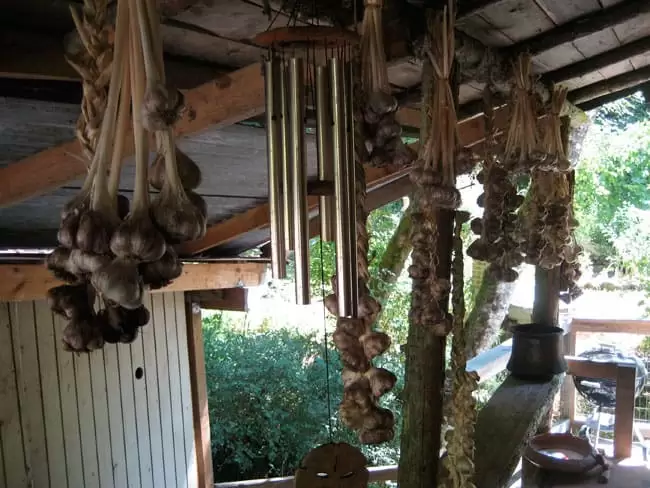
Softneck Garlic Features
Softneck garlic is not nearly as cold hardy as hardneck garlic, and is ideal for those with more mild winters. However, it is possible to grow softneck garlic in as low as USDA zone three with a thick layer of mulch.
Softneck garlic stores well; this is the type of garlic you typically see in grocery stores because the heads last for nine to 12 months in proper storage.
Softneck garlic produces more abundant cloves. The cloves are small, but some bulbs contain over 12 cloves.
One downside is that you don’t get to enjoy scapes with softnecks; their stems stay soft and flexible all growing season. This is because softneck garlic was selectively bred to create a garlic without a scape, but with more cloves and easy braiding of the stem.
There are fewer varieties of softneck garlic. A few of the top favorites include:
- California Early
- Italian Loiacono
- Silver White
- California Softneck
- Inchelium Red (These were among my top garlic picks when I lived in Oregon)
- Lorz Italian
- Silver Rose
The Takeaway to Remember:
Softneck garlic will store well, up to one year, when stored in proper conditions. The stems are easy to braid for storage, and if you live in a warmer climate, this is the type for you.
Sub-Groups of Hardneck Garlics
Hardneck garlic is broken into sub-groups. Each of these types has different characteristics that make them slightly different from the others.
Porcelain
Porcelain garlic is the easiest and most consistent type of garlic to grow and is known for being particularly cold hardy.
Porcelain garlic bulbs have 2-7 cloves per bulb with a strong, pleasant flavor. This is an excellent option if you’re new to growing garlic, and as a bonus, the storage life is a bit longer than other hardneck garlic varieties. My go-to variety in Vermont, Music, is a porcelain.
Purple Stripe
Purple Stripe garlic is genetically considered to be the ancestor of all other garlic. It has an attractive looking bulb with variegated stripes and iridescent, purple-pink papery skins with 8-12 cloves per bulb.
Rocambole
Rocambole garlic is more challenging to grow and needs fertile, rich soil, good drainage, and plenty of cold days to produce decent bulbs.
However, this type of garlic is known for having the best flavor and easy-to-peel cloves. Each bulb produces 8-12 cloves. I’m taking my chances this year and growing a popular Rocambole variety, Spanish Roja, for the first time.
Sub-Groups of Softneck Garlic
Softneck garlic has fewer varieties, but they’re broken into two sub-groups: artichoke and silverskin.
Artichoke
Artichoke garlic grows in various conditions, so it’s an excellent option for home gardeners. The cloves are larger than Silverskin garlic; each bulb produces 6-25 cloves.
The cloves are somewhat easy to peel, but the plant is easy to grow and has an excellent shelf life, between eight and ten months. If you’re looking for productive garlic plants with large bulbs this is a great choice.
Silverskin
Silverskin garlic has a flavor that is often described as “hot,” rather than nuanced. The plants are more heat-tolerant than others, growing well to zone ten, a subtropical region. The bulbs can produce up to 40 cloves!
Silverskin garlic bulbs have the best shelf life, keeping for up to 12 months, and they’re known for being easy to grow in a variety of conditions.
Planting Hardneck vs. Softneck Garlic
Planting garlic is the same, whether you choose hardneck or softneck garlic.
Before planting, open the garlic heads and remove the inner cloves, leaving the papery covering intact. Plant only the largest, healthiest cloves for the best plants; use the smaller cloves in your kitchen.
Plant the garlic cloves with the pointy end up. Each should be planted six to eight inches apart and two to three inches deep in well-amended soil. Most garlic does best planted in the fall.
Mulching the garlic bed with straw, mulch hay, or chopped leaves reduces weeds, helps prevent nutrient loss from the soil, and protects tender cloves from harsh winter weather.
I have found that my garlic does best when I remove some of the straw mulch in the spring, and top dress with a bit of organic compost. If you are growing hardneck garlic, you will want to snap off the scapes when they appear, and either cook with them, or turn them into Lactofermented Garlic Scapes!
For more information on how to grow great garlic, check out my Ultimate Guide to Growing, Harvesting, and Storing Garlic.
How to Harvest and Store Garlic
While harvesting hardneck and softneck garlic plants is the same, storage is different.
Depending on where you live, around late June or early July you will notice the garlic plant begin to turn yellow, a signal that harvest time is near. I like to wait to harvest until the 3 bottom leaves have turned brown.
To harvest, use a digging fork to gently lift the garlic plants, taking care not to bruise the bulbs. Gently brush off some of the dirt from the bulbs and hang them upside down in a cool, dry, well-ventilated space to cure for two to three weeks.
After curing, store your garlic in a cool, dry location. Softneck garlic bulbs may be braided while the stalks are flexible and hung in your cellar or pantry, so long as they’re kept out of direct sunlight. I like to clean my hardneck garlic, cut the stalks to about 8″ and bunch them to hang.
Hardneck vs. Softneck Garlic: Which Type to Grow
Can’t decide which type of garlic to grow in your garden? Here are some questions to ask:
- Where Do You Live?
If you live somewhere with super cold temperatures, like I do (Central Vermont winters are no joke!), hardneck garlic is your best bet. Likewise, if you live somewhere with a lot of heat and no freezing cold days, softneck garlic is best.
If you live somewhere in between, you’re in luck! You can grow both hardneck and softneck garlic.
- Do You Want Garlic Scapes?
Garlic scapes are a delicious, garlicky treat that grows in the spring, giving you a small taste of what is to come. Hardneck garlic is the only type that produces scapes, so this is the type for you if you want scapes.
On the flip side, garlic scapes do divert some energy away from the bulb, so if you are looking for giant garlic bulbs, you may want to skip the scapes.
- How Long Do You Want to Store The Garlic?
Are you trying to grow and store garlic for a year? If so, softneck garlic is ideal for you. Some varieties keep for nine to 12 months in proper conditions, while hardneck garlic maintains its quality for four to six months at most.
- What Flavor Profile Do You Want?
While most of us have grown up with the fairly uniform experience of commercially grown garlic, true garlic connoisseurs understand the different flavor profiles of garlic. If you want to geek out on garlic flavor, consider experimenting with some of the rich flavors that hardneck garlic has to offer. Or enjoy tasty but more mild softneck garlic.
Start Growing Garlic This Year!
Has this inspired you to start growing garlic? I hope so! Garlic is one of my favorite crops to grow, and once you’ve experienced homegrown garlic, you’ll never go back to store bought! Picking between hardneck vs. softneck garlic isn’t so hard once you know their differences!
Enjoy your garlic planting, and let me know in the comments which varieties you’re planting this year!

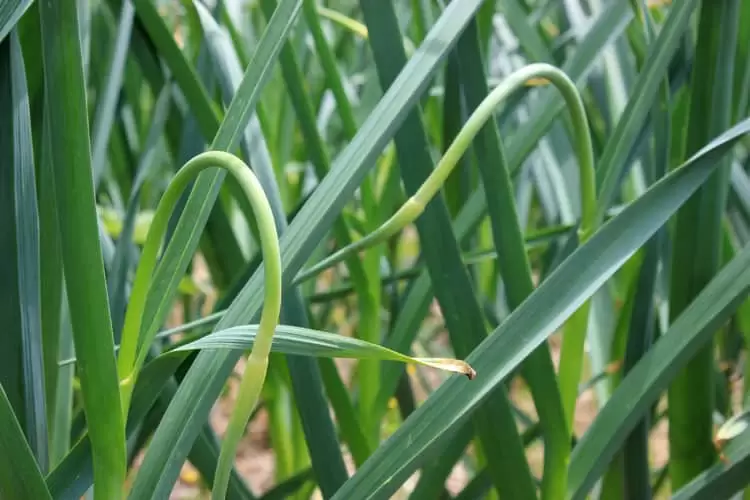
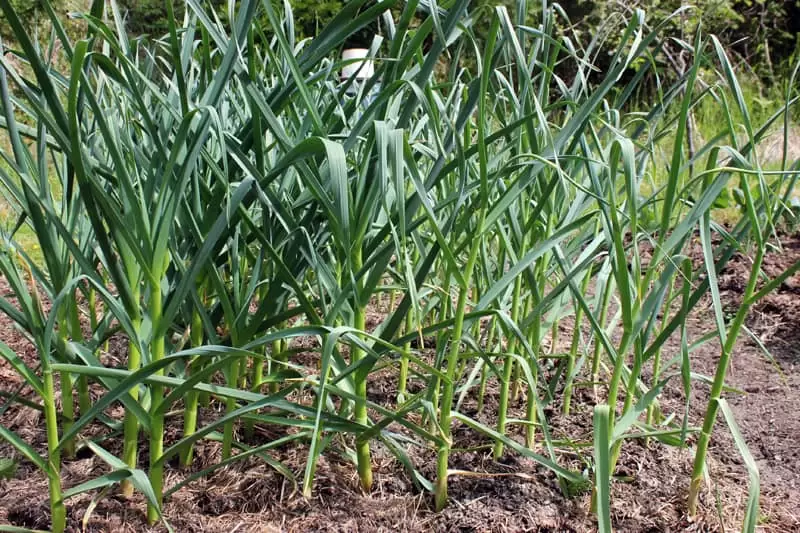
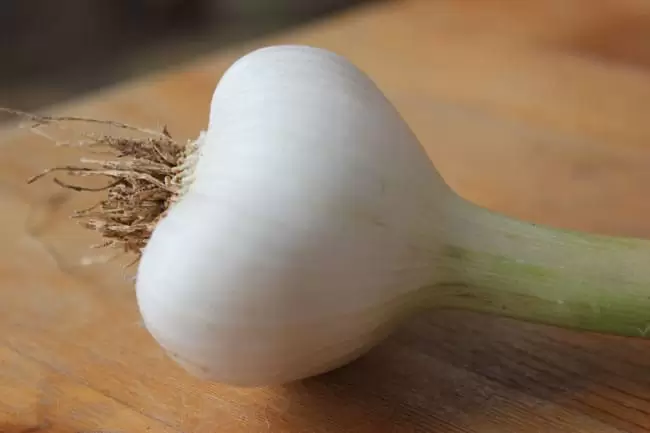
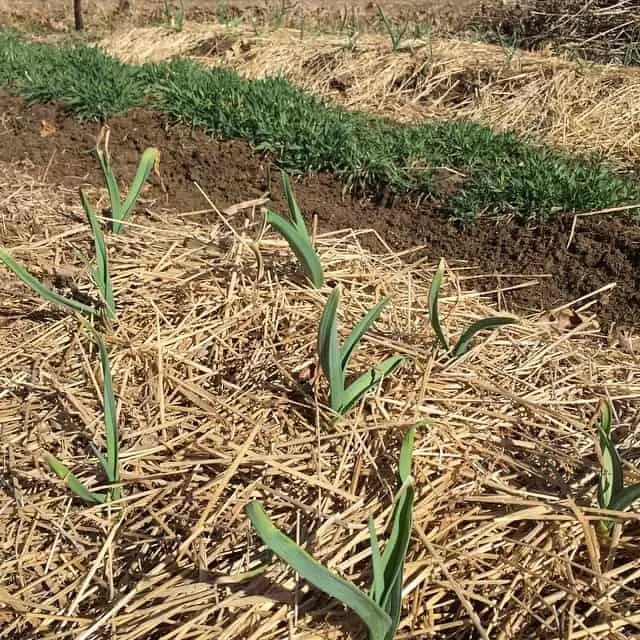
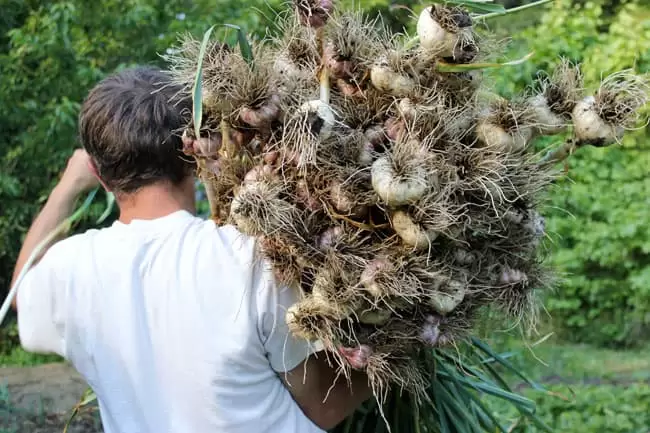
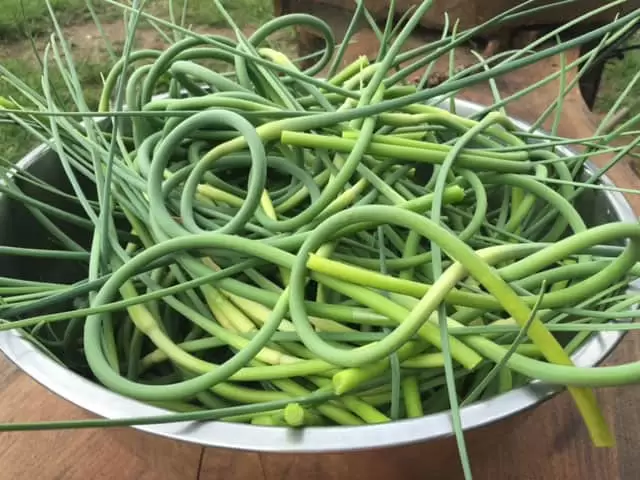
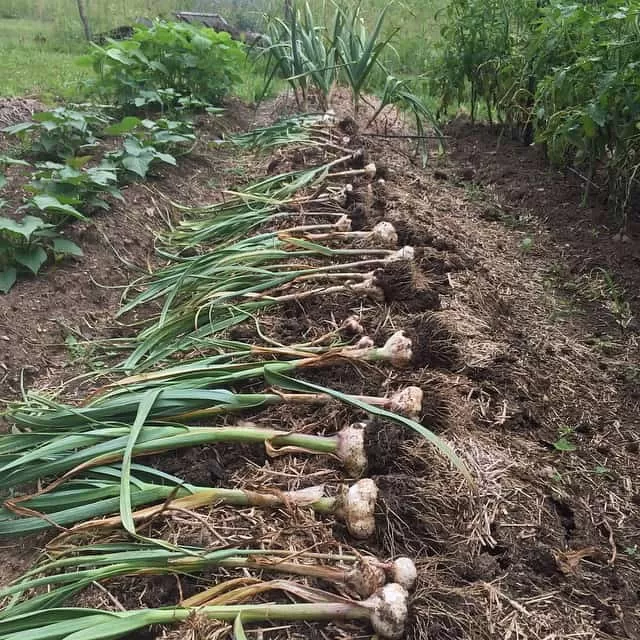
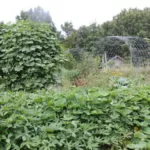
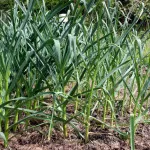
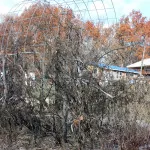

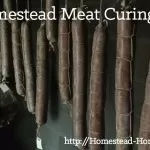
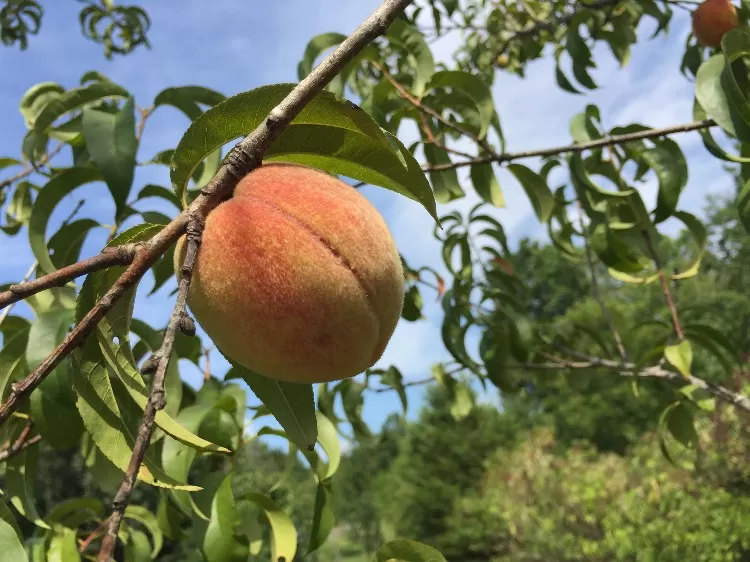


You’ve missed an important type of garlic, called Creole or Euzkadi. Physical characteristics are intermediate between hardneck & softneck, and they do well in warm, subtropical, and even tropical areas.
Thanks for sharing! I’ve always lived in colder climates, so did not know about these!